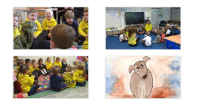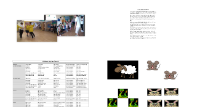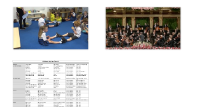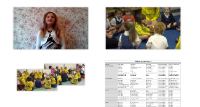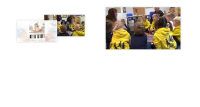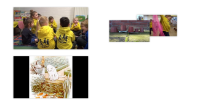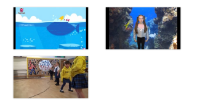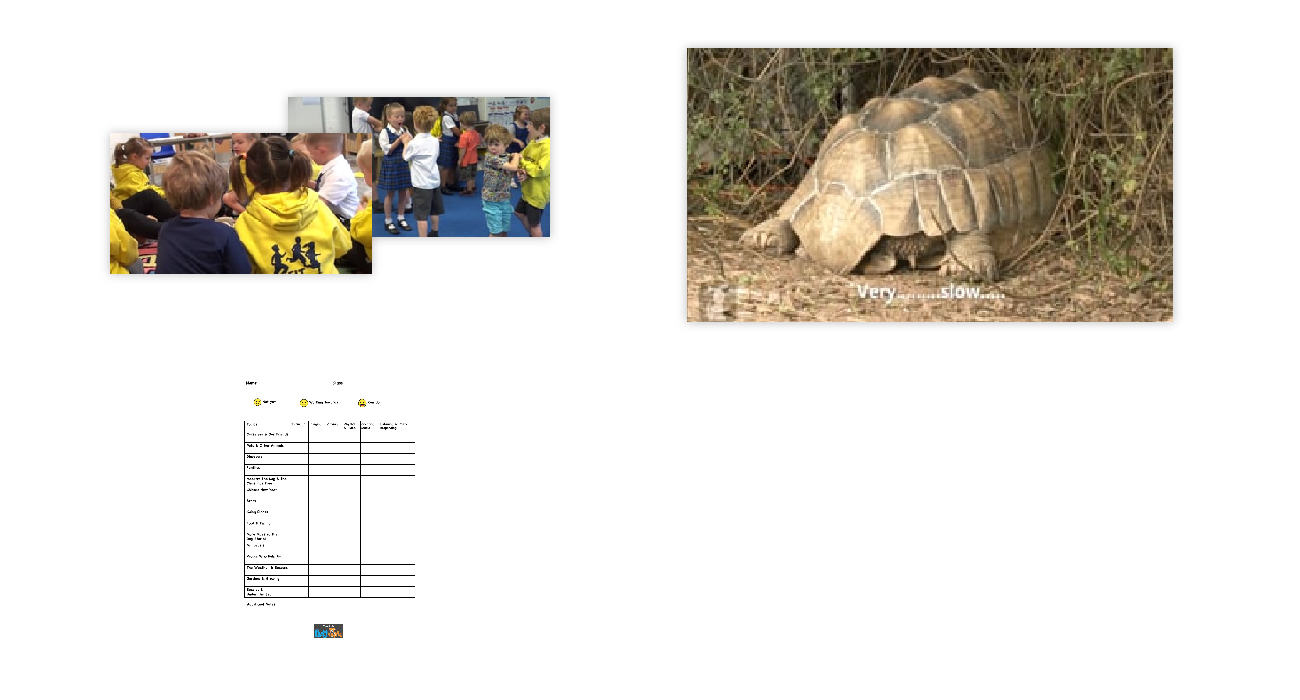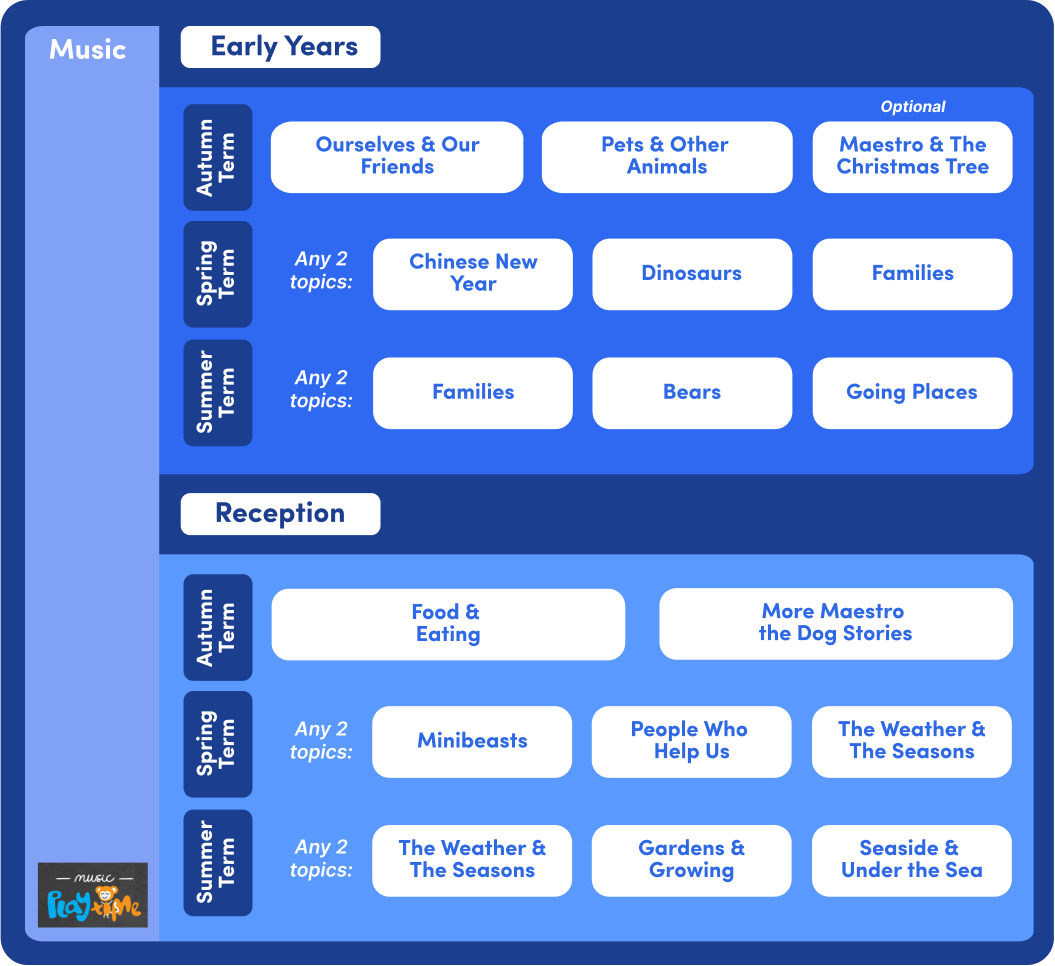Pets & Other Animals Level: Early Years
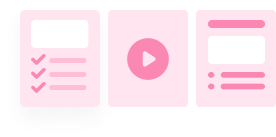
Who is Maestro the Music Dog?
Here's Maestro the Music Dog, having an adventure in the playground. Every class needs a Maestro Dog!
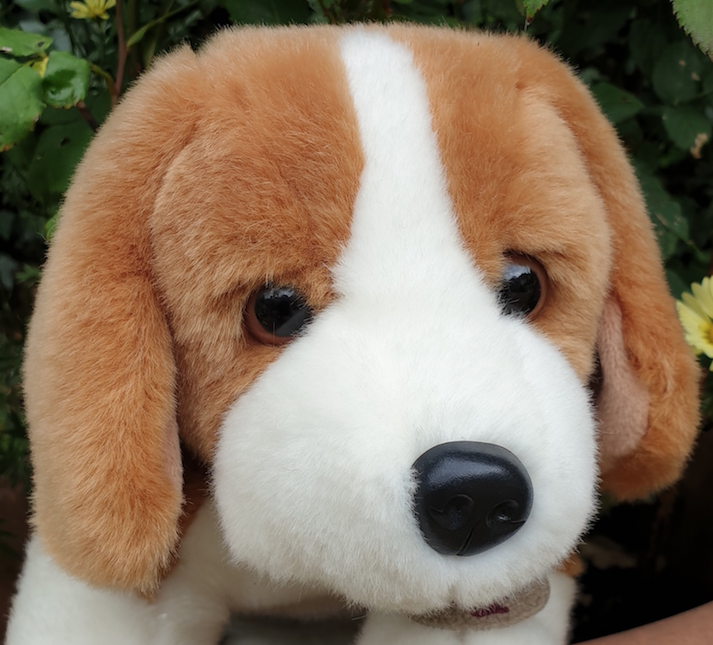
Maestro Likes to Hear Us Sing (singing in tune & pulse)
Everyone sit in a circle. Put Maestro the Music Dog in the middle of the circle. The song uses just your sing-song voice. To teach it, sing one line at a time in a first me, then you way. Ask the children to listen carefully and sing exactly the same notes as you. Persevere with reminding the children sing in tune because even very young children can, if the song is simple enough. Demonstrate not-in-tune! If you sing it wrong on purpose, the children will enjoy correcting you!
- MAE-stro LIKES to HEAR us SING
- IN the MID-dle OF the RING
When the children know the song, everyone tap the pulse using hands on knees. Tap on the CAPITAL LETTER part of the words above, and use big movements so that the children can copy you. Remember to tell the children, 'Well done with clapping the pulse,' so that they learn the word, pulse.
Passing Maestro On
On another day when the song is secure, every time you all clap, Maestro is passed from one child to the next, naming each child, like this:
- Maestro likes to hear us sing
- Pass him on to Lay-la (or Jon-a-than, and so on)
My Puppy
Here's a poem for children to chant rhythmically and you can help them to keep a steady pulse by tap their knees on the strong beats (shown in capitals).
- My PUPPY has a WIGGLY tail
- He WAGS it when he’s HAPPY
- But WHEN my kitten WAVES her tail
- It MEANS she's feeling SNAPPY
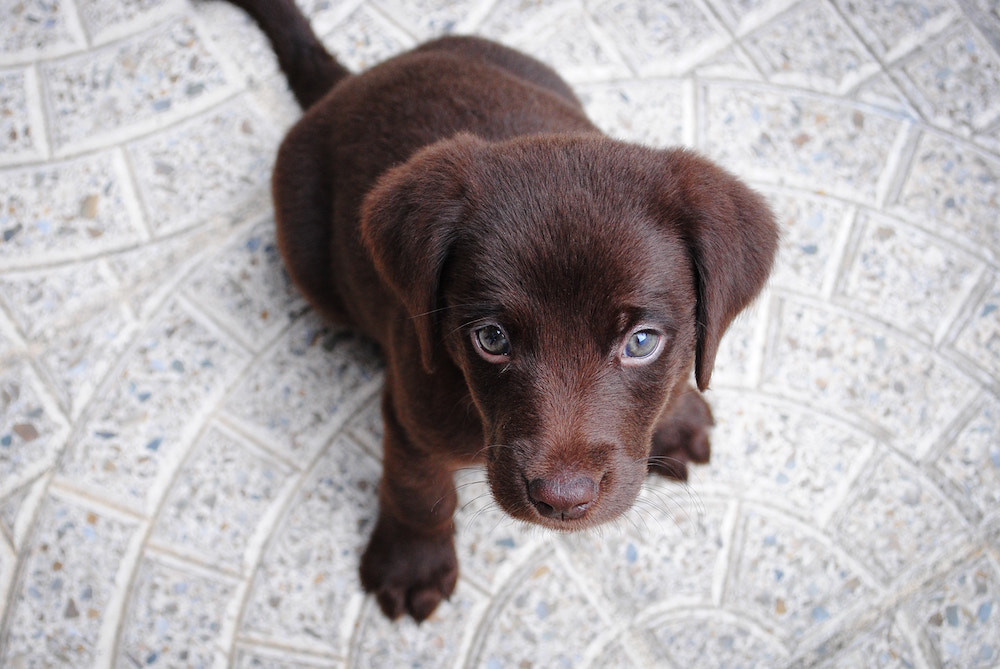

Pass the Animals Round the Ring
Everyone sit in a circle. Have several plush animals in front of you, fewer animals than children. First, go through who the animals are: Who is this? ... Yes it's Froggy! The children need to know what each animal is before you begin. Pass an animal to each child, one at a time, ask in a sing-song voice 'Who's got the elephant?' and model how to reply, 'I've got the elephant'.
Next teach the song a bit at a time, using First Me, Then You. When the song is known, pass one animal to the child on your right, who passes it to the next child, and so on. When you can see that the first animal is moving round, pass another one. If your group is around 15 children you need maybe 7 animals, otherwise you'll find one child holding onto a whole zoo! Before starting each new verse, it helps the children to start all together if you first sing, Ready! on the note you'll begin with. Here are a few favourite characters from my plush animal collection:
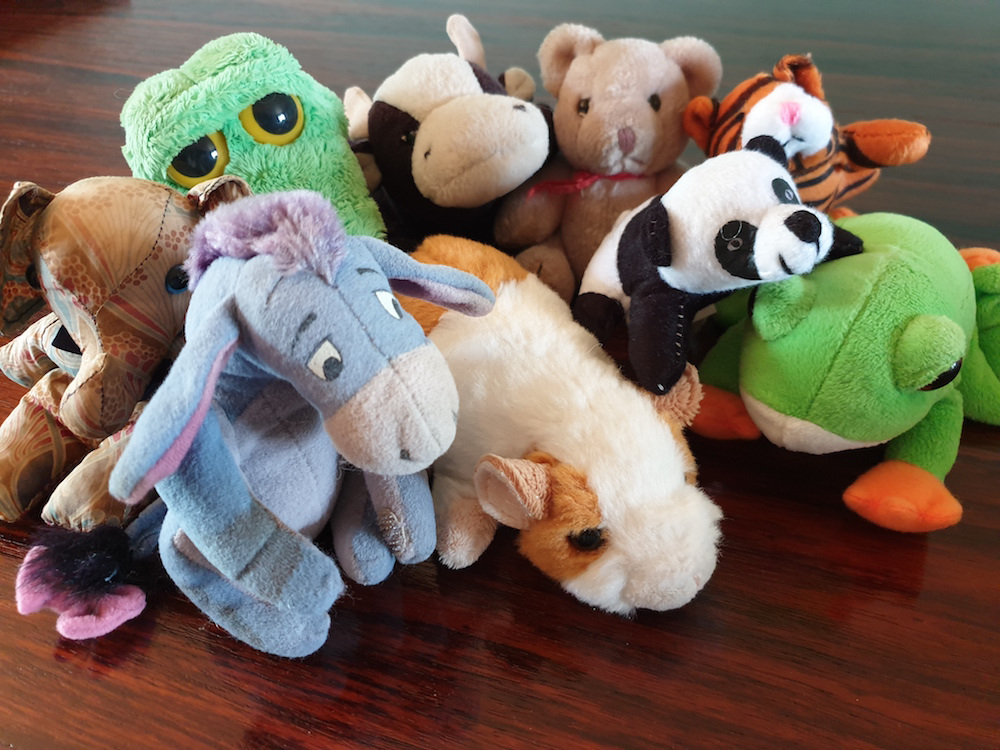
- Pass the animals round the ring
- round the ring
- round the ring
- Pass the animals round the ring
- And then STOP
- Teacher: Who's got the tiger?
- Child: I've got the tiger
This was the children's first attempt. The song quickly became their favourite and they organised it for themselves when I wasn't there!
Here's the Froggy Again!
The children can do actions to this little song. If you can use an outdoor space the children can be spread out. In a hall, each child can have a hula-hoop 'water lily' to sit in and do their hopping and jumping.
- A little frog in the pond am I
- Hippety hippety hop
- And I can jump in the air so high
- Hippety hippety hop

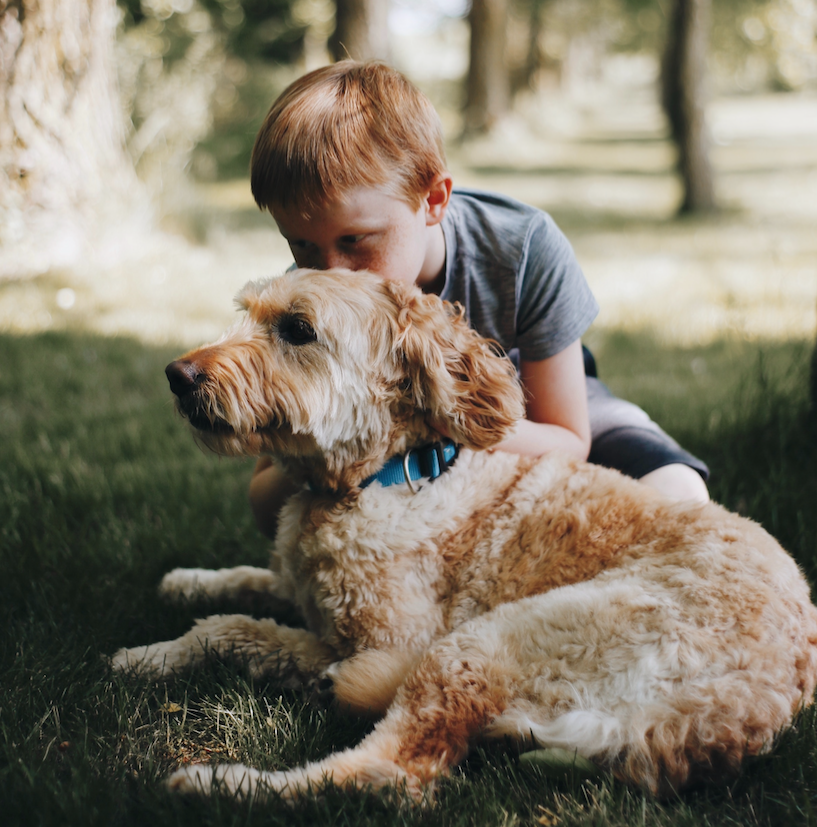
Tommy Tucker's Dog
The song is easy to learn if you teach it a step at a time, First me, then you. You have to be up for a challenge to teach the movements, but it's all good fun! (Watch the video first and try the actions out yourself with a partner.)
When the children know the song reasonably well, put them into pairs and sort out who will cross their hands (this is the tricky bit) and in which direction they will turn. At this point the singing tends to deteriorate and you'll need to do a bit more work on it. Eventually it will all come together and the singing will be good as well as the movements being great fun. There is a 'progressive' version of this game in which each child turns 180 degrees to a new partner after every verse but, unless you are braver than I am, I think you will decide not to try it with this age-group!
- Bow wow woo
- Whose dog are you?
- Little Tommy Tucker's Dog
- Bow wow woo
Here's one of our early attempts!
Solo Version
You can easily do this game without the children having partners. The children all stand in a space, inside their own hula hoop. The actions are similar to the paired game so that they can transfer readily, at some point, into working with a partner:
- Bow wow woo - clap hands
- Whose dog are you? - point ahead and wag your finger
- Little Tommy Tucker's Dog - turn around
- Bow wow woo - clap hands

A Great Big Pig
The best way to teach this song is to use the first me, then you method, taking a line at a time and starting with just the words (Check that the children understand the word, 'sty'):
- A great big pig once lived in a sty
- And three little piggies had she
- She waddled about saying 'Oink oink oink'
- While the little ones said 'Wee! Wee!'

Big Pig, Little Piglet - Music corner activity
Loud and Quiet Pigs! (dynamics)
Put out a selection of instruments. In pairs the children each choose an instrument - one loud for the big pig and one quiet for the little piglets. Make up a little sequence together:
Big Pig (loud) - Piglets (quiet) - Big Pig (loud)
Then swap over instruments and try again.
Fast and Slow Pigs! (tempo)
Make up another sequence:
Big Pig (play slowly) – Piglets (play quickly) – Big Pig (slowly)
Swap instruments and try again.
Piggy Sounds to Symbols
To begin helping children to relate sounds to symbols, have finger paint and big sheets of paper ready. Ask the children make pictures of their three sounds, in a row, in the order they played them (eg loud-quiet-loud). They will need to think how a loud sound might look different from a quiet one, and how quick sounds can be shown as different from slow ones.
Your Piggy Song (pitch, structure)
Everyone practise making high pitch and low pitch piggy sounds: grunt, squeal, running on trotters, talking 'like a pig' and so on. Make a 'pig sty' out of boxes then give each child the chance to go inside the pig sty and make up their own piggy song using words and noises.
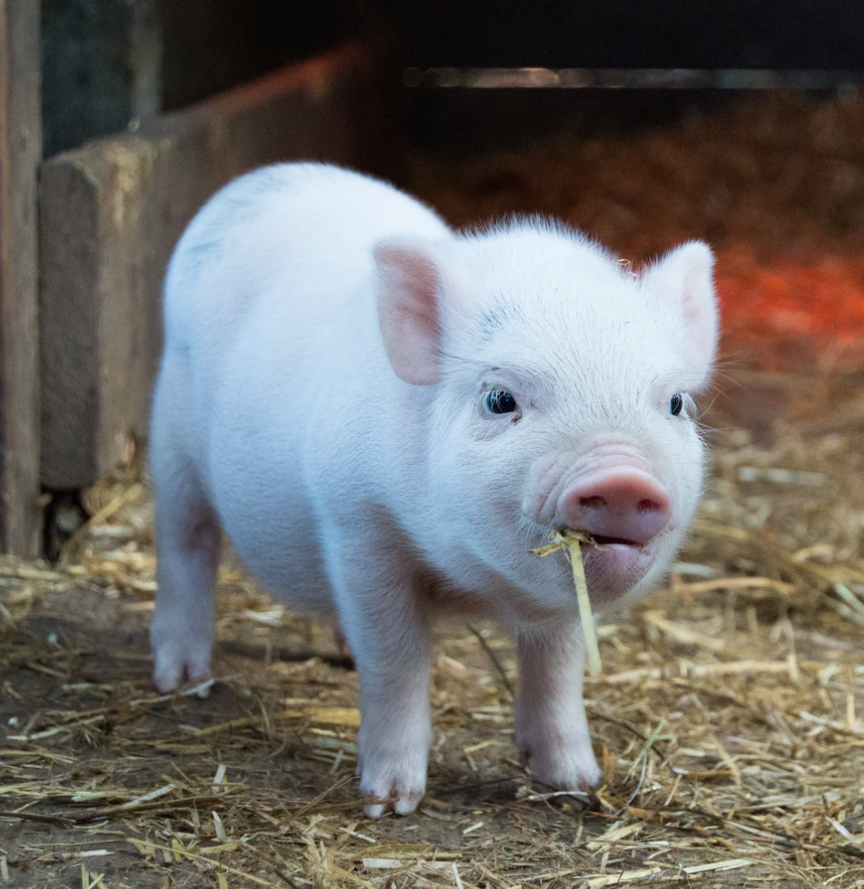
Big Pig, Little Piglet - Solo Version
For 'Loud & Quiet Pigs' and 'Fast & Slow Pigs', the children listen to the song first then individual children choose just one instrument each for making up the sequences. You will need to put out instruments that are capable of playing loud and quiet, and fast and slow. 'Piggy Sounds to Symbols' is essentially a solo activity.

Who Said Mice? (dynamics)
Watch the video and listen to this music about a cat and a mouse. What do the children think is happening when the music gets louder? In pairs create a 'still image' of the cat and the mouse. (A still image is like a snapshot of something happening, frozen in time, that shows how each person or animal is feeling and what they are doing.)

Tortoises (tempo, texture, timbre)
Everyone listen to Tortoises from the Carnival of the Animals by the composer Saint-Saens. The children move their arms and legs on all fours, as slowly as a tortoise, then pretend to go to sleep at the end. You may notice that the tune is a slowed down version of the Can-Can tune!
Ask what makes the music 'sound like' the way tortoises move. You can introduce the phrase 'slow tempo'. Draw attention to the piano playing at the start of Tortoises and listen as it continues in a plodding way at the same time as the other instruments (more instruments creating a thicker texture). If you have a piano available, let the children hear the sound when they press the keys. Then take off the big panel under the keyboard and ask them to say how it sounds different when they pluck or strum the strings (don't worry - pianos are very robust!).


Generation Kind
The RSPCA has an ongoing kindness to animals programme, with activities and resources suitable for Early Years children. Find out more here!

My Pet Poem (literacy)
The teacher says the first part of the poem and the children think first, then take turns to make up the rest. When you have a good description, you say the poem again with the children taking turns to add their contribution at the right time. When you have practised this together a few times, each child paints their imaginary pet's portrait in finger paints.
- I've got a strange pet
- You haven't seen him yet
- He's got … ...
- and ... ....
- He's got a … …
- and a … …
Here are some examples:
- He's got a blue tail
- and three eyes
- He's got tiny teeth
- and a purple nose

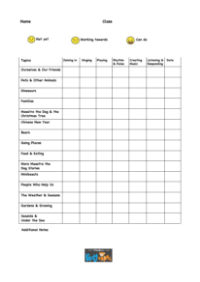

Who is Maestro the Music Dog?
Here's Maestro the Music Dog, having an adventure in the playground. Every class needs a Maestro Dog!

Maestro Likes to Hear Us Sing (singing in tune & pulse)
Everyone sit in a circle. Put Maestro the Music Dog in the middle of the circle. The song uses just your sing-song voice. To teach it, sing one line at a time in a first me, then you way. Ask the children to listen carefully and sing exactly the same notes as you. Persevere with reminding the children sing in tune because even very young children can, if the song is simple enough. Demonstrate not-in-tune! If you sing it wrong on purpose, the children will enjoy correcting you!
- MAE-stro LIKES to HEAR us SING
- IN the MID-dle OF the RING
When the children know the song, everyone tap the pulse using hands on knees. Tap on the CAPITAL LETTER part of the words above, and use big movements so that the children can copy you. Remember to tell the children, 'Well done with clapping the pulse,' so that they learn the word, pulse.
Passing Maestro On
On another day when the song is secure, every time you all clap, Maestro is passed from one child to the next, naming each child, like this:
- Maestro likes to hear us sing
- Pass him on to Lay-la (or Jon-a-than, and so on)
My Puppy
Here's a poem for children to chant rhythmically and you can help them to keep a steady pulse by tap their knees on the strong beats (shown in capitals).
- My PUPPY has a WIGGLY tail
- He WAGS it when he’s HAPPY
- But WHEN my kitten WAVES her tail
- It MEANS she's feeling SNAPPY


Pass the Animals Round the Ring
Everyone sit in a circle. Have several plush animals in front of you, fewer animals than children. First, go through who the animals are: Who is this? ... Yes it's Froggy! The children need to know what each animal is before you begin. Pass an animal to each child, one at a time, ask in a sing-song voice 'Who's got the elephant?' and model how to reply, 'I've got the elephant'.
Next teach the song a bit at a time, using First Me, Then You. When the song is known, pass one animal to the child on your right, who passes it to the next child, and so on. When you can see that the first animal is moving round, pass another one. If your group is around 15 children you need maybe 7 animals, otherwise you'll find one child holding onto a whole zoo! Before starting each new verse, it helps the children to start all together if you first sing, Ready! on the note you'll begin with. Here are a few favourite characters from my plush animal collection:

- Pass the animals round the ring
- round the ring
- round the ring
- Pass the animals round the ring
- And then STOP
- Teacher: Who's got the tiger?
- Child: I've got the tiger
This was the children's first attempt. The song quickly became their favourite and they organised it for themselves when I wasn't there!
Here's the Froggy Again!
The children can do actions to this little song. If you can use an outdoor space the children can be spread out. In a hall, each child can have a hula-hoop 'water lily' to sit in and do their hopping and jumping.
- A little frog in the pond am I
- Hippety hippety hop
- And I can jump in the air so high
- Hippety hippety hop


Tommy Tucker's Dog
The song is easy to learn if you teach it a step at a time, First me, then you. You have to be up for a challenge to teach the movements, but it's all good fun! (Watch the video first and try the actions out yourself with a partner.)
When the children know the song reasonably well, put them into pairs and sort out who will cross their hands (this is the tricky bit) and in which direction they will turn. At this point the singing tends to deteriorate and you'll need to do a bit more work on it. Eventually it will all come together and the singing will be good as well as the movements being great fun. There is a 'progressive' version of this game in which each child turns 180 degrees to a new partner after every verse but, unless you are braver than I am, I think you will decide not to try it with this age-group!
- Bow wow woo
- Whose dog are you?
- Little Tommy Tucker's Dog
- Bow wow woo
Here's one of our early attempts!
Solo Version
You can easily do this game without the children having partners. The children all stand in a space, inside their own hula hoop. The actions are similar to the paired game so that they can transfer readily, at some point, into working with a partner:
- Bow wow woo - clap hands
- Whose dog are you? - point ahead and wag your finger
- Little Tommy Tucker's Dog - turn around
- Bow wow woo - clap hands

A Great Big Pig
The best way to teach this song is to use the first me, then you method, taking a line at a time and starting with just the words (Check that the children understand the word, 'sty'):
- A great big pig once lived in a sty
- And three little piggies had she
- She waddled about saying 'Oink oink oink'
- While the little ones said 'Wee! Wee!'

Big Pig, Little Piglet - Music corner activity
Loud and Quiet Pigs! (dynamics)
Put out a selection of instruments. In pairs the children each choose an instrument - one loud for the big pig and one quiet for the little piglets. Make up a little sequence together:
Big Pig (loud) - Piglets (quiet) - Big Pig (loud)
Then swap over instruments and try again.
Fast and Slow Pigs! (tempo)
Make up another sequence:
Big Pig (play slowly) – Piglets (play quickly) – Big Pig (slowly)
Swap instruments and try again.
Piggy Sounds to Symbols
To begin helping children to relate sounds to symbols, have finger paint and big sheets of paper ready. Ask the children make pictures of their three sounds, in a row, in the order they played them (eg loud-quiet-loud). They will need to think how a loud sound might look different from a quiet one, and how quick sounds can be shown as different from slow ones.
Your Piggy Song (pitch, structure)
Everyone practise making high pitch and low pitch piggy sounds: grunt, squeal, running on trotters, talking 'like a pig' and so on. Make a 'pig sty' out of boxes then give each child the chance to go inside the pig sty and make up their own piggy song using words and noises.

Big Pig, Little Piglet - Solo Version
For 'Loud & Quiet Pigs' and 'Fast & Slow Pigs', the children listen to the song first then individual children choose just one instrument each for making up the sequences. You will need to put out instruments that are capable of playing loud and quiet, and fast and slow. 'Piggy Sounds to Symbols' is essentially a solo activity.

Who Said Mice? (dynamics)
Watch the video and listen to this music about a cat and a mouse. What do the children think is happening when the music gets louder? In pairs create a 'still image' of the cat and the mouse. (A still image is like a snapshot of something happening, frozen in time, that shows how each person or animal is feeling and what they are doing.)

Tortoises (tempo, texture, timbre)
Everyone listen to Tortoises from the Carnival of the Animals by the composer Saint-Saens. The children move their arms and legs on all fours, as slowly as a tortoise, then pretend to go to sleep at the end. You may notice that the tune is a slowed down version of the Can-Can tune!
Ask what makes the music 'sound like' the way tortoises move. You can introduce the phrase 'slow tempo'. Draw attention to the piano playing at the start of Tortoises and listen as it continues in a plodding way at the same time as the other instruments (more instruments creating a thicker texture). If you have a piano available, let the children hear the sound when they press the keys. Then take off the big panel under the keyboard and ask them to say how it sounds different when they pluck or strum the strings (don't worry - pianos are very robust!).


Generation Kind
The RSPCA has an ongoing kindness to animals programme, with activities and resources suitable for Early Years children. Find out more here!

My Pet Poem (literacy)
The teacher says the first part of the poem and the children think first, then take turns to make up the rest. When you have a good description, you say the poem again with the children taking turns to add their contribution at the right time. When you have practised this together a few times, each child paints their imaginary pet's portrait in finger paints.
- I've got a strange pet
- You haven't seen him yet
- He's got … ...
- and ... ....
- He's got a … …
- and a … …
Here are some examples:
- He's got a blue tail
- and three eyes
- He's got tiny teeth
- and a purple nose


